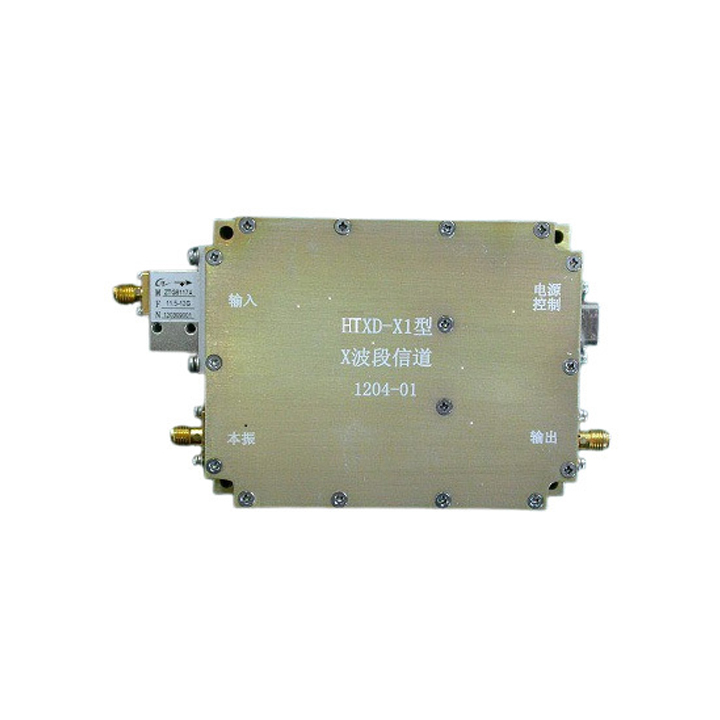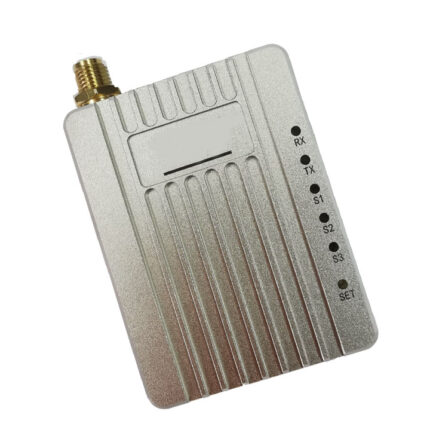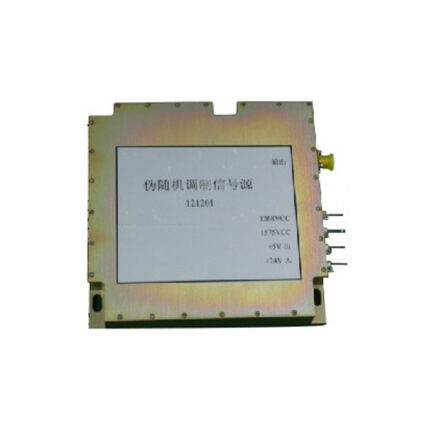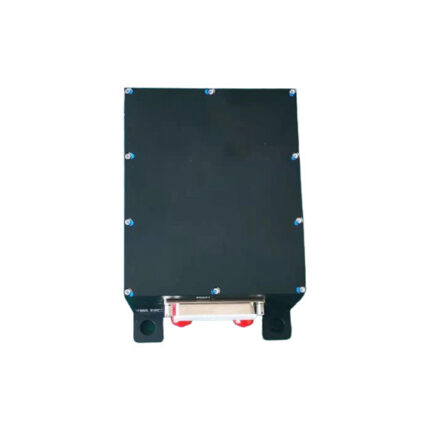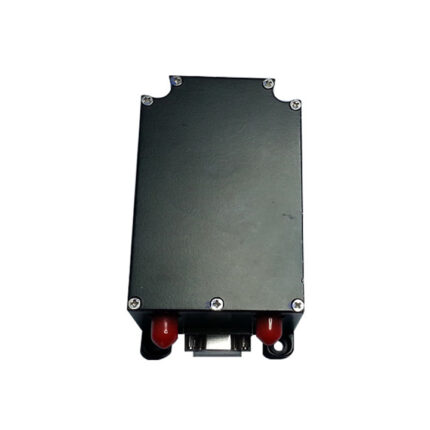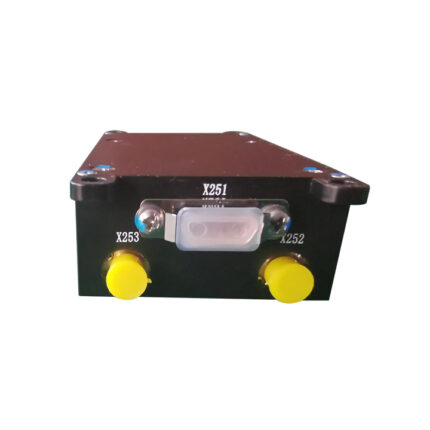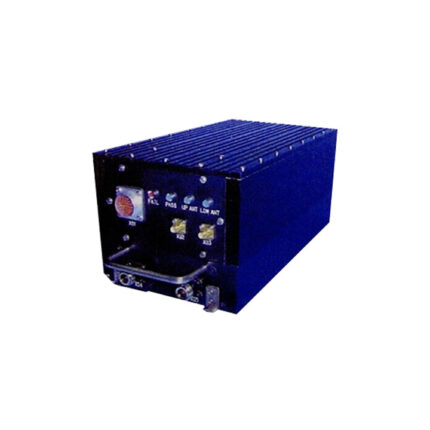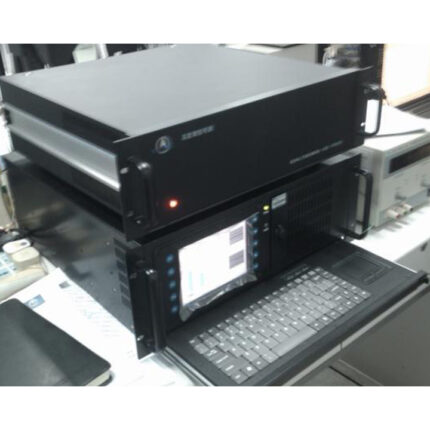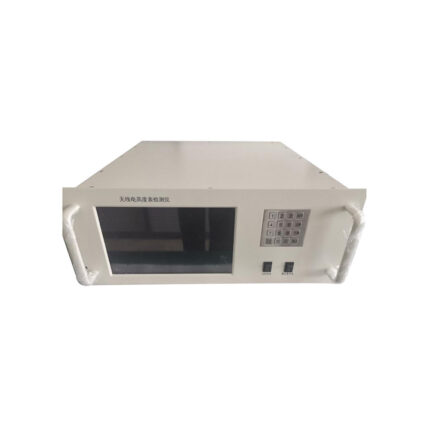Channelized Receiver
Building on the expertise of its experienced microwave team, process team, and management team, Hangtai Technology has continuously raised the bar for R&D and production of microwave components. The microwave components developed by this division not only satisfy the requirements of the company’s radar and radio altimeter systems but also deliver value to society through their applications.
Related products
MDG-200 Radio Altimeter
The MDG-200 radio height-setting device operates in the C-band and adopts a monopulse working system. Its sensitive component is of the heterodyne type, and the circulator at the antenna terminal uses a transceiver common-mode configuration. Prior to missile launch, the height-setting device needs to be powered on; it then performs a self-check and completes height setting via the communication interface. After the missile is launched, the radio frequency (RF) module is activated, and a gate is set based on the preconfigured height. When the preset height is reached, the device outputs height-setting command information and telemetry data. The MDG-200 height-setting device features mature technology: the monopulse design enhances the altimeter’s height measurement performance, and the device also has the characteristic of not being affected by the carrier’s speed.
Subminiature Radio Altimeter MY-3001
The MY-3001 series altimeters include models such as MY-3001A, MY-3001B, MY-3001C, MY-3001D, MY-3001E, MY-3001F, MY-3001G, and MY-3001H; as China’s smallest and lightest full-function radio altimeters that meet aerospace standards, they serve as key components for longitudinal height channel control and can be widely used in cruise missiles and UAVs to measure altitude relative to the sea or ground. The MY-3001 series altimeters adopt linear modulation coefficient technology adaptive to altitude changes and echo signal narrow-band receiving technology to enhance the product’s resistance to active interference, use coherent local oscillator mixing to achieve superior performance in resisting co-frequency asynchronous interference, employ echo signal spectrum front detection technology to improve tracking accuracy, and follow the three design principles of serialization, standardization, and modularization to enable high-speed production; additionally, built on a closed-loop tracking system, they integrate digital control technology, microwave integration technology, and hybrid integration technology to realize ultra-miniaturization of the product. As China’s first full-function radio altimeter, the series is known as the "high-speed rail ticket" in the industry.
Mini Radio Altimeter MY-4001
The MY-4001 series altimeter represents the latest generation of radar altimeters. While complying with aerospace standards, it boasts an extremely compact size, with external dimensions measuring a mere 86mm × 52mm × 25mm. As a full-featured radio altimeter, the MY-4001 serves as a core component for the control of the longitudinal altitude channel. It finds wide application in flying missiles and unmanned aerial vehicles (UAVs) to measure altitude relative to the sea surface or ground.
Employing a linear frequency-modulated continuous wave (LFMCW) measurement system, the MY-4001 exhibits outstanding characteristics, including high precision, strong anti-interference capability, excellent battery compatibility, and stable, reliable operation. These attributes make it particularly well-suited for radar altitude measurement in ultra-light and ultra-small aircraft. For interface output, it adopts RS422 and CAN protocols, which effectively enhances the reliability of the product's data transmission.
MDG-400 Radio Altimeter
The MDG-400 radio altimeter operates in the C-band and adopts a frequency-modulated continuous wave (FMCW) working system, with its antenna utilizing a transmit-receive separation mode. Prior to missile launch, the altimeter (serving as the height-fixing device) is powered on, and it undergoes self-check and height presetting via the communication interface. After the missile is launched, the radio frequency (RF) module is activated, and frequency variation parameters are set based on the preset height. When the preset height is achieved, the altimeter outputs height-fixing command information and telemetry data. The MDG-400 altimeter features mature technology; its adoption of frequency-modulated continuous wave (FMCW) technology endows it with the advantages of compact size and a large height measurement range.
Subminiature Radio Altimeter MY-70B
The MY-70B radio altimeter is a solid-state C-band radio altimeter system based on frequency-modulated continuous wave (FMCW) technology, characterized by constant beat frequency and closed-loop tracking measurement. It maintains a constant beat frequency by servo-controlling the slope of the sawtooth wave that modulates the microwave oscillator, thereby achieving automatic altitude tracking. Under the condition of constant beat frequency, the measured altitude is proportional to the modulation period; thus, altitude information can be obtained by measuring the modulation period, and the system then converts this information into an altitude voltage for output. The MY-70B altimeter possesses excellent anti-jamming performance, owing to its adoption of a narrow-band receiver (with gain adjustable according to altitude) as well as technologies including equivalent spectrum front-end detection, weighted frequency identification, and automatic servo tracking. In terms of component design, its high-frequency components implement microwave integration while its low-frequency components adopt a modular design—these measures collectively enhance the product’s reliability, anti-interference capability, and electromagnetic compatibility. Additionally, the MY-70B altimeter uses RS422 and CAN protocols for its interface output, which further improves the reliability of the product’s data transmission.
MASS-03 Radio Altimeter Continuous Echo Signal Simulator
The MASS-03 Radio Altimeter Continuous Echo Signal Simulator is a specialized testing device designed to generate stable, continuous echo signals that replicate real-world altitude-related signal environments for radio altimeters. Tailored to support the development, calibration, and performance verification of radio altimeters, it accurately simulates various echo signal characteristics (such as amplitude, frequency, and delay) corresponding to different altitude scenarios, enabling users to test critical functions of radio altimeters—including height measurement accuracy, tracking stability, and anti-interference performance—under controlled laboratory conditions. By providing reliable, repeatable continuous echo signals, the simulator eliminates the need for costly and complex field tests, streamlining the testing process while ensuring radio altimeters meet design specifications for accuracy, stability, and robustness in practical operation.
MAST-09 Radio Altimeter Detection Unit
The MAST-09 Radio Altimeter Detection Unit is a compact, aerospace-grade component that monitors, validates, and processes radio altimeter data for aircraft. It filters interference, cross-references data with other flight sensors, and detects faults (e.g., signal loss, calibration drift) to deliver reliable terrain-relative altitude info—critical for safe takeoff, low-altitude flight, approach, and landing, even in low visibility. Built to meet strict aerospace standards (e.g., DO-160, DO-178), it withstands extreme environmental conditions, suiting commercial and military aircraft.
Full Function Radio Altimeter MMK-4
The MMK-4 altimeter is a full-function radio altimeter that meets aerospace standards; serving as a key component for longitudinal altitude channel control, it can be widely applied in cruise missiles and aircraft to measure altitude relative to the sea or ground. The MMK-4 adopts linear modulation coefficient technology adaptive to height changes and echo signal narrow-band receiving technology to enhance the product’s resistance to active interference, uses coherent local oscillator mixing to achieve superior performance in resisting co-frequency asynchronous interference, employs echo signal spectrum front detection technology to improve tracking accuracy, and follows the design principles of serialization, standardization, and modularization—endowing it with good product inheritance, maturity, and reliability.

